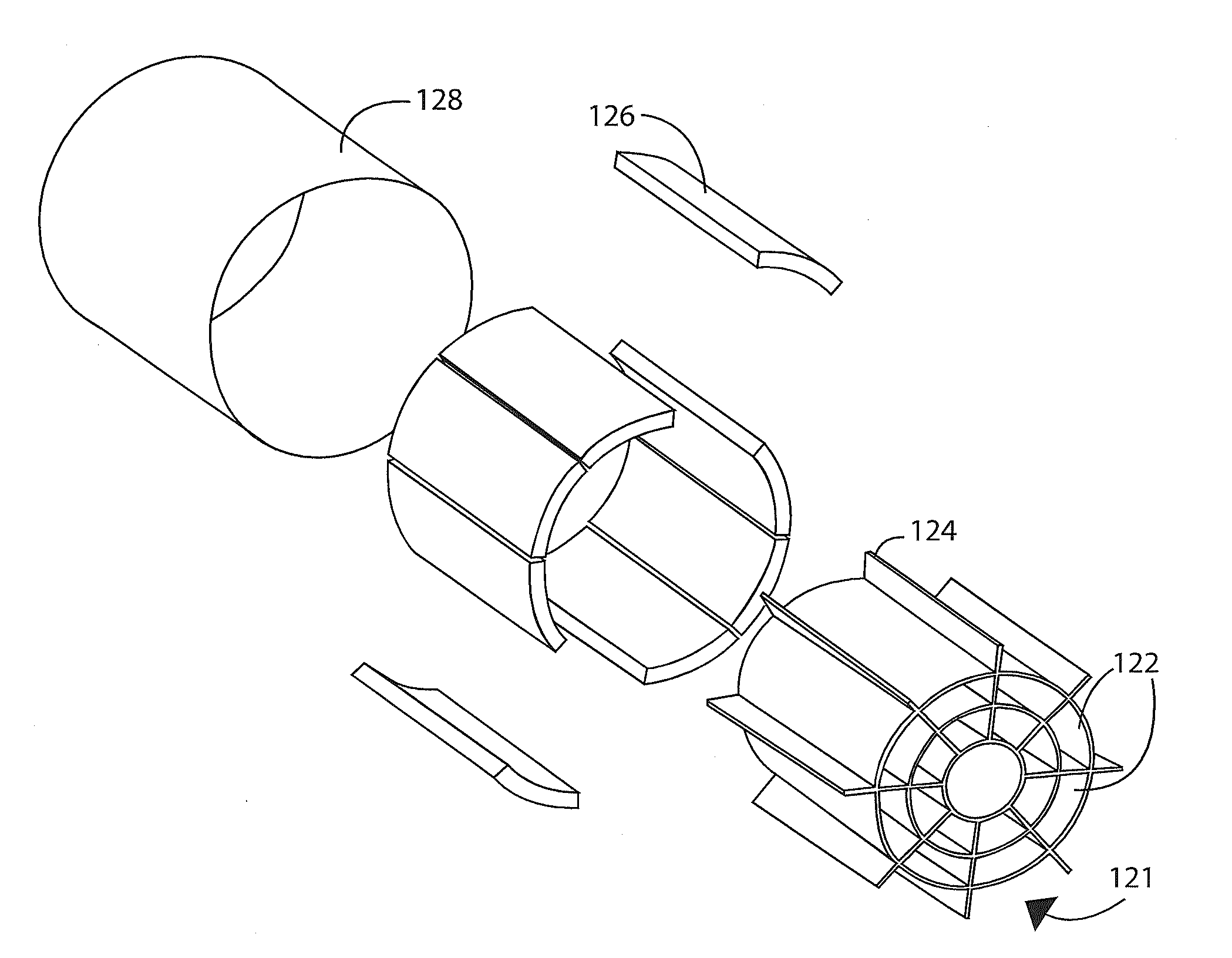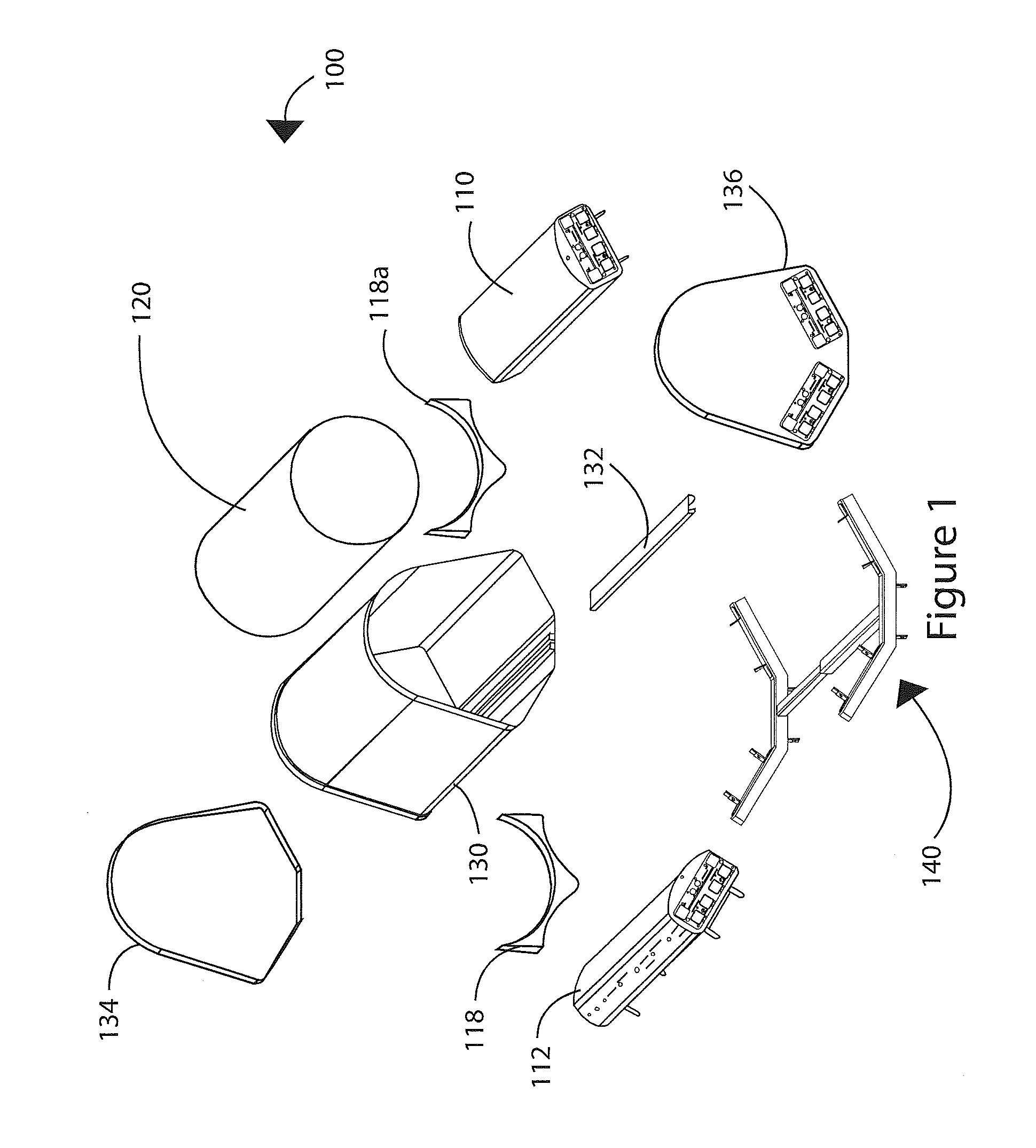Multi-beam antenna with modular luneburg lens and method of lens manufacture
a technology of modular luneburg and antenna, applied in the field of radio communication, can solve the problems of increasing costs and space requirements, dividing a coverage area into smaller sectors, and drawbacks, and achieve the effects of narrowing the beamwidth of the antenna, increasing the associated gain, and reducing the cost of installation
- Summary
- Abstract
- Description
- Claims
- Application Information
AI Technical Summary
Benefits of technology
Problems solved by technology
Method used
Image
Examples
Embodiment Construction
[0018]Referring to the drawings, and initially to FIG. 1, a multiple beam base station antenna system 100 is illustrated in an exploded view. The multiple beam antenna system 100 includes a first wireless access antenna 110, a second wireless access antenna 112, a lens 120, top and bottom lens supports 122a and 122b, a shroud 130, a shroud locking device 132, a top end cap 134, a bottom end cap 136, and a telescopic mounting structure 150. An assembled view of the multiple beam antenna is illustrated in FIG. 2.
[0019]In some embodiments, the wireless access antennas 110 and 112 may be, for example, any 65° HPBW multi-band antenna. Such multi-band antennas are referred to herein as “single beam” antennas because, while each band may have its own separately controllable beam, there is only a single beam per band. Alternatively, or additionally, single band antennas or antennas of other half power beam widths may be used. In this respect, one of the advantages of the systems described h...
PUM
 Login to View More
Login to View More Abstract
Description
Claims
Application Information
 Login to View More
Login to View More - R&D
- Intellectual Property
- Life Sciences
- Materials
- Tech Scout
- Unparalleled Data Quality
- Higher Quality Content
- 60% Fewer Hallucinations
Browse by: Latest US Patents, China's latest patents, Technical Efficacy Thesaurus, Application Domain, Technology Topic, Popular Technical Reports.
© 2025 PatSnap. All rights reserved.Legal|Privacy policy|Modern Slavery Act Transparency Statement|Sitemap|About US| Contact US: help@patsnap.com



